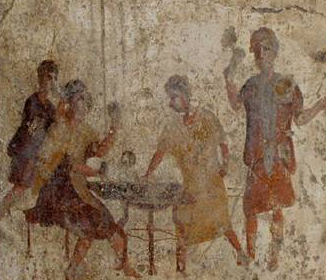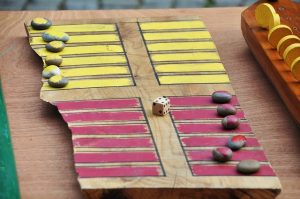History of Checkers
The game of checkers is a classic family game. Today, the game is played internationally, much like chess. While it consists of a board similar to that of a chessboard and shares the same characteristics of chess, checkers remains unique. One of the ways checkers is different from chess is that it is easier to draw your opponent. In fact, while the game is called “checkers” in American English, the British call the game “Draughts,” which derives from the root word to draw. It is also unique in the fact that you can take several pieces in one move. While checkers may seem like a simple board game, there is a lot of history behind it. Here, we will discuss the origins of this 5000-year-old strategy game and what happened to it during its journey to the 21st century.
First Discoveries
The first known game of checkers was played in the city-state of Ur in 3000 B.C. An independent country in ancient Mesopotamia next to the Euphrates River, Ur is now located in present-day Iraq and no longer shares a coastline with the Euphrates. The game played in Ur, however, does not have the same format as modern-day checkers. In fact, 21st-century checkers didn’t begin to take form until 1100 A.D., and even that has been modified.

A similar game to that played in Ur was practiced by the ancient Egyptians. This game dates back to 1400 B.C., and it is recorded to have been introduced by queen Hatasu. After that, well-known Greek figures such as Plato and Homer mention a game called Petteia, an Egyptian-based board game often played with pebbles. The game was later named Pebbles after its pieces and was practiced for thousands of years.
Modern Checkers
 Around 1100 A.D., a game invented in southern France used backgammon pieces instead of rocks, and a chessboard instead of a custom-made 5×5 board. Each piece was called a “fers,” deriving its name from the chess queen, who at the time moved in a similar way to a “fers.” In fact, when the chess queen became known as a “dame,” the pieces also became known as “dames.” The game itself was called “Fierges” or “Ferses,” both names resembling the pieces used.
Around 1100 A.D., a game invented in southern France used backgammon pieces instead of rocks, and a chessboard instead of a custom-made 5×5 board. Each piece was called a “fers,” deriving its name from the chess queen, who at the time moved in a similar way to a “fers.” In fact, when the chess queen became known as a “dame,” the pieces also became known as “dames.” The game itself was called “Fierges” or “Ferses,” both names resembling the pieces used.
The rule of crowning came into use by the 13th century, and the rule of mandatory taking was introduced in 1535, which prompted the name “Jeu force,” or English draughts. Finally, in the 18th century, William Payne wrote the earliest known book about modern-day draughts, or American checkers, which consists of a 64-space checkerboard with black and white “checkers.”
Checkers is a fun family game, and not because it is an excellent way to pass the time, but because it offers fun competition and prompts the player to use strategy to beat their opponent. The game also tells an exciting tale of world history that helps piece together modern developments that date back thousands of years. From ancient Mesopotamia to the 21st century, the game of checkers has remained a fun and strategic game that has sustained generational modifications to make the game more user-friendly and challenging.